Pocket Fruit Knives: A Synopsis of their History from the United Kingdom, France, Northern Europe & USA by Simon Moore
Original price was: $87.50.$20.00Current price is: $20.00.
A superb knife book featuring top quality color images of antique folding fruit knives and detailed information on the complex world of duty, hallmarks and cutlers’ marks. A must for dealers and collectors alike! Hardcover, full color, 296 pp.
In stock
Description
This is it, folks — a first-class book at a closeout price!
A first-class book about antique folding fruit knives — the first comprehensive volume on the subject.
BOOK REVIEW
Reviewed by Knife World Staff
“Pocket fruit knives” are folding knives which contain a cutting blade intended specifically for fruit. Because the acid in fruit juices will rapidly discolor a carbon steel blade, cutlers offered these knives with blades of silver, gold, or silver plate (rarely other materials), which better resist corrosion. With an elegant fruit knife in your pocket, you were prepared for whatever fruit-dining opportunity might present itself.
Perhaps no area of knife collecting has been so unfairly neglected as these fruit knives. In design, quality and ornamentation many represent the pinnacle of the cutler’s art, and yet it seems that relatively little attention has been paid to them. Inexplicably, collector values have languished well below those fetched by steel-bladed knives of comparable quality, but perhaps that’s all about to change.
This new book entitled Pocket Fruit Knives is the work of Simon Moore, the leading expert in the field and since 1975, the author of many articles on fruit knives and early European cutlery for The National Knife Magazine, Silver Magazine, and others (he’s also penned three booklets for Shire’s “Album” series). This book shares its format, retail price, and high standard with The London Knife Book reviewed last month – no coincidence as both are published by David Watson of Antique Knives Ltd.
The book is divided into chapters covering: A Brief History of Pocket and Fruit Knives in Europe up to 1650; Early French Pocket Fruit Knives; Pocket Fruit Knives From Other Countries (primarily the U.S.); as well as four lengthy chapters on the evolution, peak, and decline of English Pocket Fruit Knives from the 1700s to 1940.
The coverage of French and English fruit knives of all eras is truly outstanding, and far surpasses all previous publications on the subject. While French specimens are rarer here in the U.S. than in Europe, English-made fruit knives are easily the most often encountered and the most popularly collected, making this book an important resource. Coverage of American fruit knives as well as those made in other countries is more basic, but I still can’t point to any other source that does a better job.
The text is clearly written and well organized, and are accompanied by well over 600 illustrations. Like most other books on collectibles, the photographs are a HUGE drawing card – not just because they’re clear and of decent size, but because they show so many fine knives. The hundreds of fruit knives pictured here range from common examples that collectors encounter with frequency, to a wide variety of extremely rare specimens – including some of the finest known.
I thought that I would list a few of the more exotic examples pictured, to give one a taste of how complete this book is. Of course there are countless fruit knives with silver blades and mother of pearl (nacre) or tortoiseshell handles, but the number with gold blades is amazing, and handle materials extend to agate, enamel, ivory and fancy celluloid. Some are elaborately inlaid with silver or gold wire (piqué work), bits of contrasting shell, and even diamonds and split pearls. There are unusual mechanisms like slotted, slide-out, and butterfly fruit knives, and one even has a mechanism to close the slot between the scales when the blade is open (wow!) You’ll find pocketknives containing silver fruit blades, and fruit knives with fork, nut pick, and orange peeler blades. One fruit knife shown has a kukri-shaped silver blade!
But some of my favorite photos are those that aren’t “pretty.” There are quite a few shots of early fruit knives that have been disassembled to show hallmarks concealed on a blade’s tang. And fourteen superbly illustrated pages are devoted to fruit knife construction, common faults, repair, and fakery and how to spot each. The author even provides guidelines as to how much such faults will affect the collector value of a given piece.
Speaking of values, Moore has thoughtfully provided us with a separate insert suggesting approximate collector values for each knife illustrated. Though the value ranges are somewhat wide and are listed in British Pounds (1 GBP = approximately US $1.60 as of this writing) this is a great idea. Values seem a bit on the high side for the U.S. market – but that may change with the publication of this book.
Four important pages are devoted to identification of maker’s hallmarks, something that collectors should really appreciate. There is also a glossary, a bibliography, and a very detailed index which I anticipate using often.
Pocket Fruit Knives is without question the finest resource ever compiled for fruit knife enthusiasts – coupled with a basic guide to hallmarks, most collectors may not need another book on the subject. Collectors of antique English and French folding knives in general will also find much to like here, and it will appeal to the maker of “art knives” as a source of inspiration in the same way that The Antique Bowie Knife Book has. But don’t be surprised if it leads you to collect these vintage gems!
Contents
A Brief History of Pocket and Fruit Knives in Europe up to 1650
Early French Pocket Fruit Knives
Evolution of English Pocket Fruit Knives to c.1770: The Period of Confusion
The Pistol-grip Period: 1770-1790
The Golden Age: 1790-1815
Later Regency to pre-Victorian. Rococo and Neo-classical Re-visited: 1815-1837
The Extravagance of the Victorian Period: 1837-1890 & Later French Pocket Fruit Knives
The Declining Years: 1890-1940
Pocket Fruit Knives From Other Countries
Collecting, Construction, Pitfalls, Fakery and Faults
Pocket Fruit Knives, List of Makers, References & Further Reading
Hardcover, 296 pp.
Page size: 7.7″ x 11.2″; 574 color images plus 55 additional b&w
ISBN 978-0-9559507-0-4



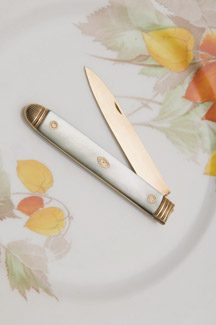
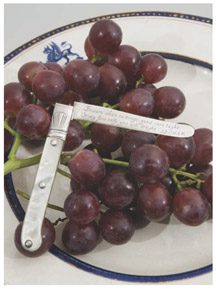
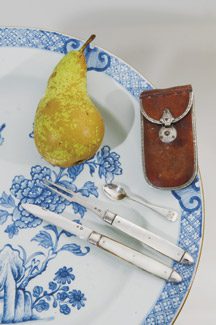

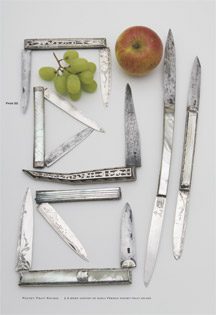

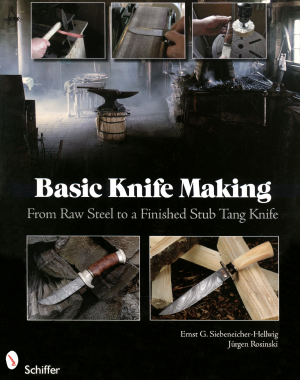

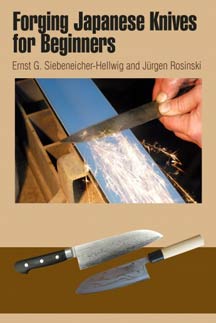
Reviews
There are no reviews yet.